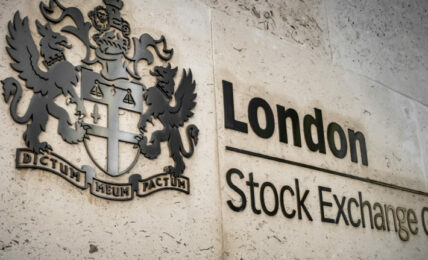Global professional services firm EY announced the publication of its annual Global Climate Risk Barometer report, analyzing the state of corporate climate disclosures. The study found a significant increase in TCFD-aligned reporting by companies over the past year, but a continuing shortfall of transparency into the financial impact of climate-related risks, and a disconnect between climate reporting and action on decarbonization.
A key issue raised by the report is the disconnect between an increased level of climate-related disclosure, and companies’ ability to provide transparency on the material climate-related information, with only 29% of companies referencing climate-related matters in their financial statements.
EY Global Climate Change and Sustainability Services Leader, Matthew Bell, said:
“Boards and senior management teams should be using their disclosures to inform their stakeholders, particularly their investors, about how they are understanding and managing their risks in practice.”
For the report, EY analyzed the disclosures of more than 1,500 companies across 47 countries and 13 climate risk-exposed financial and non-financial sectors.
Key aspects of disclosure examined in the report included “Coverage,” or the degree to which companies are providing some level of information complying with Task Force on Climate-Related Financial Disclosures (TCFD) recommendations, and “Quality,” or the extent to which disclosure meets the 11 TCFD recommendations.
The study found that companies are increasingly providing climate-related disclosures, with TCFD coverage reaching 84% for calendar year 2021, up sharply from 70% in the prior year. According to the report, the growth in TCFD-aligned reporting reflects both a response by companies to increasing regulatory demands in some jurisdictions, as well as an increase in voluntary reporting to help identify and mitigate risk and to engage with stakeholders such as investors, employees and customers.
As TCFD coverage increases, however, the study found that climate reporting quality remained relatively stagnant, with an overall average quality score of 44%, compared to 42% last year, indicating that companies continue to lag on providing sufficient transparency into the climate challenges that they face and the financial impact of climate-related risks.
In the foreword to the report, Bell noted that while “companies are making ambitious announcements to be net zero by a specified date in the future, often by 2050,” they are often “providing little detail about how they intend to meet these targets, leading many investors to intensify the pressure on companies to publish their transition plans.”
One of the report’s key findings is that an increasing number of companies are conducting scenario analysis to assess the strategic and financial implications of potential climate-related risks and opportunities, including both transition risk and physical risk. While the use of scenario analysis is growing, however, it is still being conducted by less than half (49%) of companies.
Examining the study’s finding by region, the report revealed that disclosure coverage and quality were strongest in jurisdictions that have implemented mandatory climate reporting requirements, with the UK and Japan holding the top 2 spots in each metric. Both countries have recently introduced TCFD-aligned climate reporting requirements for companies.
The study also revealed that the most climate-exposed sectors were also often the most likely to provide superior reporting, with the energy sector taking the top spot for both quality (in a tie with the insurance sector) and for coverage, as energy companies face pressure from investors to provide greater transparency into their decarbonization strategies.
Matt Handford, Climate Change and Sustainability Principal, Ernst & Young LLP, said:
“The energy sector should be viewed as an important low-carbon transition platform. aligning to the expectations of investors and regulators, as well as those of the markets more broadly.”
The energy sector also scored the best in terms of the proportion of companies disclosing decarbonization strategies, at 81%. By contrast, however, the agriculture, food and forest sectors scored the lowest among nonfinancial sectors in terms of decarbonization strategy disclosure, and among the lowest on both coverage and quality, at only 48%.
Emma Herd, EY Oceania Climate Change and Sustainability Partner, said:
“Providing better climate-related financial disclosures is an opportunity for investors to ‘walk the talk’ when it comes to driving up the quality of climate reporting.”
Click here to access the EY Global Climate Risk Barometer report.
The post Corporate Climate Reporting Lacking Transparency on Financial Impact: EY appeared first on ESG Today.


